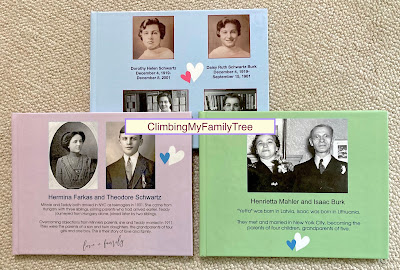In my current family-history photo book, I'm telling the story of my husband's maternal grandparents, Floyda Mabel Steiner McClure (1878-1948) and Brice Larimer McClure (1878-1970). One page is devoted to Floyda's first marriage, to an affluent local farmer in Upper Sandusky, Ohio, in 1898. Three years later, Floyda left him and filed for divorce--very unusual for a woman in her early 20s in small-town Ohio, circa 1901.
Which court house?
A few years ago, I called two county court houses in the area to see which might have the divorce files. Turns out Floyda filed in the closest court to her hometown, much to my surprise. Other ancestors I've researched filed for divorce in a neighboring county or even another state. Not Floyda. I imagine her mother and sisters stood by her as she prepared to confront her husband in the court room.
It cost me only $3 and postage to obtain photocopies of all the divorce documentation by snail mail. Here's what I learned, all of which I'm sharing in my photo book.
Floyda's side
Floyda alleged that her husband was verbally abusive (calling her a "damn hen" and jeering that she was low-bred, among other taunts and curses I won't repeat here). She said he was also physically abusive (scratching her face, kicking her, threatening to do more).
Her husband's side
Her husband's attorney responded to the petition with just a few handwritten lines to the court. The lawyer wrote "that the facts stated therein are not sufficient to constitute a course of action." Note that the lawyer didn't dispute Floyda's version, just said the allegations weren't enough to lead to divorce. Hmmmm.
No-show leads to divorce
Floyda's husband failed to respond in person to the court summons and the judge therefore ruled entirely in Floyda's favor, granting the divorce and all she requested in her petition.
At top is the accounting of how much Floyda won: $215 in alimony and full payment of her divorce costs (in all, worth $8,400 in today's money).
The court also ruled she could return to her husband's home and retrieve her own belongings. Floyda now legally resumed using her maiden name. I found her mentioned in newspaper social items as "Miss Floyda Steiner" once again.
Only recently did I figure out how Miss Steiner met Mister McClure. That story is also in the current photo book!


















